Engineer Leaves Tech Career To Save Endangered Indians Crafts, Earns Rs 50 Lakh in 2 Yrs
“I always loved practising Nirmal painting, but I doubted in my mind regarding what the future holds for this art form? Will anyone appreciate it enough to keep it alive?” wonders Mohammed Abdul Hakeem, a 57-year-old artisan from Telangana.
For years, he had been working as a piece-rate artisan, creating beautiful wood-based paintings, but was unsure about his craft’s sustainability. With traditional art forms slowly losing their place in the modern world, the artisan felt trapped in a cycle of underappreciation and uncertainty about the future.
But his story took a turn when he met Sushmita Kaneri, a software engineer-turned-entrepreneur, who started reviving endangered crafts and improving the livelihoods of artisans like Hakeem.
Hailing from a humble background in Pune, Maharashtra, Sushmita was raised by parents who were committed to hard work and self-sustainability. Her parents taught her the values of wisdom in decision-making and kindness. With a degree in software engineering from Vishwakarma Institute of Technology (VIT) Pune, she was ready to start her professional journey in 2020. However, it was during her schooling days that the seed for social entrepreneurship was first sown.
 Sushmita Kaneri was always inclined towards striking a balance between technology and her passion for becoming a social entrepreneur.
Sushmita Kaneri was always inclined towards striking a balance between technology and her passion for becoming a social entrepreneur.
In a conversation with The Better India, the 26-year-old recalls, “During my school days, I was the class monitor and tried to launch a crowdfunding campaign, gathering money from my classmates to donate to a cause. We raised Rs 500 and decided to help an orphanage by buying them stationery. That small gesture opened my eyes to the struggles faced by many people, and it stirred my passion for social impact and volunteering with various NGOs.”
It was this formative experience that led her to think about making a difference through technology and social impact. After completing her studies, she found herself at a crossroads. Even though she already had a job offer in hand, she felt a strong pull towards striking a balance between her expertise in technology with her passion for building a social enterprise.
Instead of choosing a stable career in software engineering, in 2021, she finally launched ‘Gullak’, a crowdfunding platform aimed at tracking donations and their impact. While the initiative provided an outlet for generosity, it also revealed the limitations of simply donating money.
“I realised that just donating money was not sustainable. We needed to create solutions that would empower people and help them build a lifelong income,” she says.
From coding to crafting: How this software engineer took the leap
This realisation led the young entrepreneur to pivot her focus towards livelihood-based crowdfunding. She began her search for solutions that could provide sustainable livelihoods for people in need, particularly through the lens of India’s rich but endangered crafts.
One of her turning points came in 2021 when she travelled to Telangana and met artisans practising Nirmal art, a wood-based craft known for its intricate process and storytelling through painting. “I saw how these artisans had been practising the craft for generations, but their art form was becoming increasingly underappreciated,” the social entrepreneur explains.
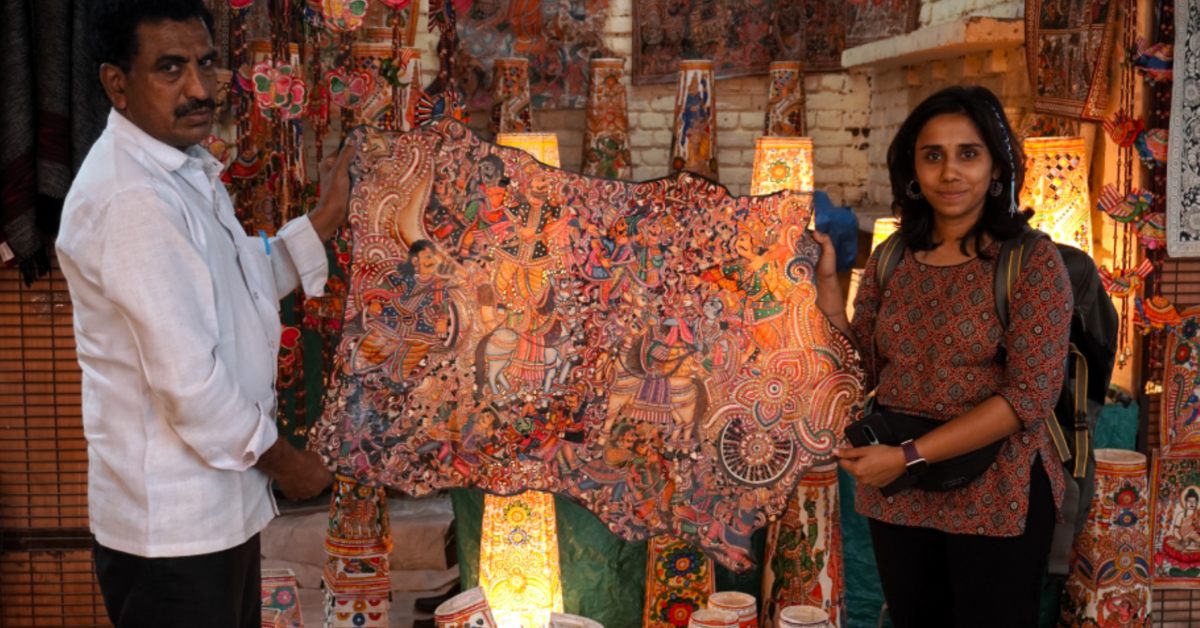 Sushmita travelled across India to learn about all the art forms that are becoming endangered
Sushmita travelled across India to learn about all the art forms that are becoming endangered
She adds, “The artisans were disheartened, feeling that their hard work was neither recognised nor fairly valued. When I spoke to one of them and asked whether he would encourage his son to carry on the tradition, he grew visibly angry. He told me he would advise his son to find a regular job instead. That moment was a turning point for me, and I realised we needed to preserve these traditional crafts and empower the artisans to earn a sustainable livelihood.”
Moved by the struggles of the Nirmal artisans and after spending another year travelling across the country to connect with other craftsmen, Sushmita founded ‘Gullakaari’ in April 2023. The platform is designed to connect artisans with customers, co-create art, and raise awareness about endangered art forms while helping artisans sustain their livelihoods. The vision behind Gullakaari is to give traditional art the respect and recognition it deserves.
The organisation’s mission is to preserve India’s cultural heritage while making these crafts relevant to modern consumers. By offering a marketplace for traditional art forms like Warli, Patachitra, Gond, and Tholu Bommalata, the platform allows artisans to reach a broader audience and benefit from a steady stream of orders.
When ancient art meets AR and QR
When people ask the social entrepreneur where she has used her software engineering skills in her work, she says, “We use tech only where it adds value without altering the soul of the craft. For example, we trained the Tholu Bommalata artisans to create lampshades, incorporating 3D-printed logos for corporate clients. The traditional leather puppetry of Andhra Pradesh was once a vibrant form of storytelling, but now, it has nearly vanished. We have used technology in a way that when it is lit, the lamp beautifully illuminates not only the intricate art but also a 3D-printed logo, blending heritage with modern technology.”
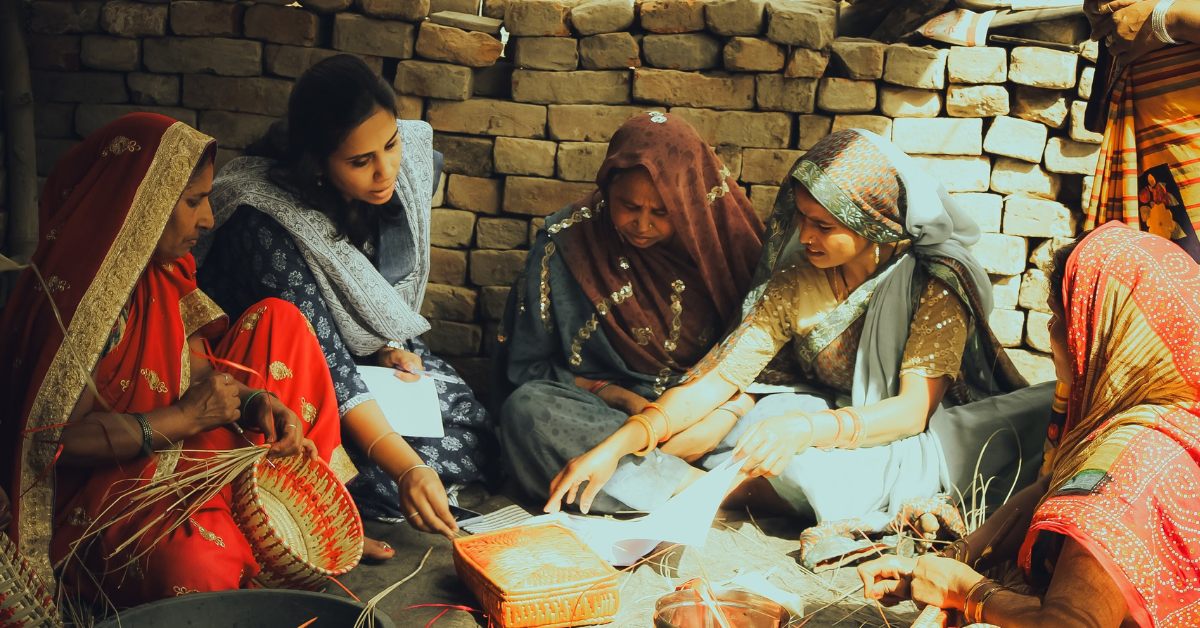 Gullakaari is working to revive 13 endangered arts in India with the help of technology
Gullakaari is working to revive 13 endangered arts in India with the help of technology
The entrepreneur adds, “It is not about changing the craft but augmenting it with technology to make it more relevant today. We focus on preserving the traditional process while making these products functional and stylish.”
Another thing she adds, “In Tholu Bommalata, we replaced goat leather with vegan leather and adapted traditional tools with modified inks to suit the new medium. Blending innovation with tradition mindfully, that is where the real challenge lies, not in switching careers.”
She also points out another instance where technology is playing a massive role in preserving a traditional art.
“Kavad, a traditional storytelling box from Chittorgarh, Rajasthan, unfolds like a visual journey with each door revealing a new chapter painted by skilled artisans. Crafted by carpenters, painters, and narrators, this layered art form is fading as live storytelling declines. To preserve it, we introduced QR code-based narration, allowing viewers to scan and discover the story behind each panel, blending age-old craft with digital storytelling,” she says.
Gullakaari also has plans of integrating augmented reality (AR), allowing customers to visualise how traditional art forms, such as paintings, will look on a table or a Pashmina shawl will look on them, before making a purchase. “This is the future of crafting, where we combine technology with authenticity to give customers an immersive experience,” the software engineer-turned-entrepreneur says.
Middlemen took the money, but now the artisans take the pride
At the heart of Gullakaari is its strong artisan community. With over 1,000 artisans from across India engaged with the platform, many are receiving training to craft everything from coasters and tote bags to lampshades and tableware. In just two years, the social entrepreneur has provided sustainable livelihoods to more than 100 artisans, helping them use their traditional art styles to make functional products.
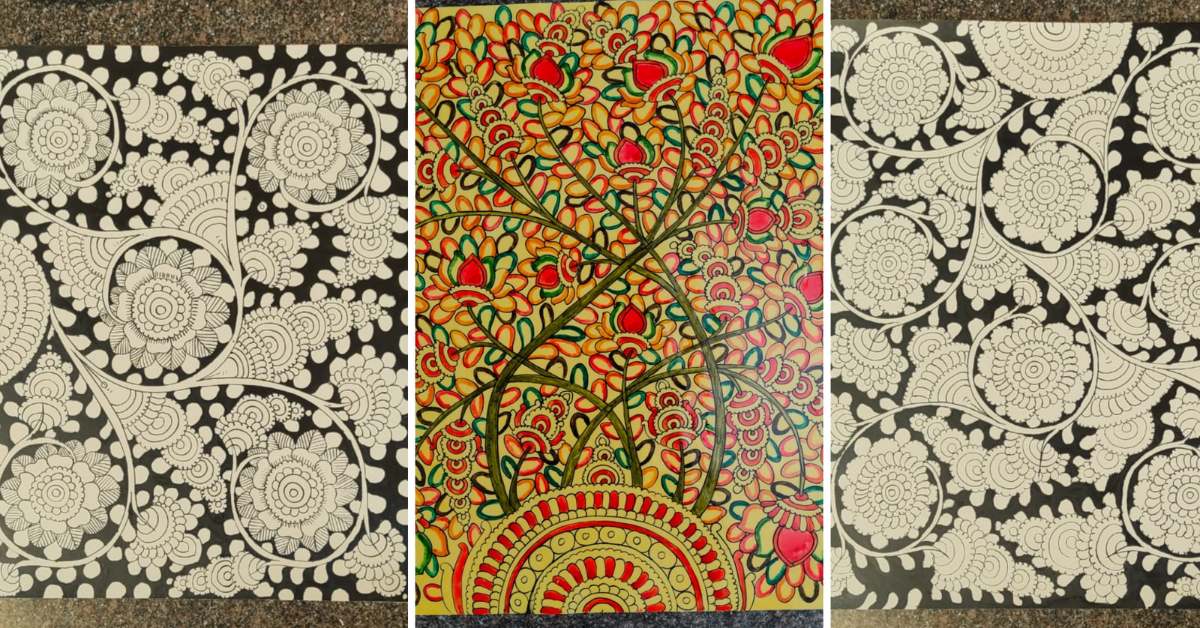 Gullakaari trains artisans to craft functional products using traditional art that can be sold easily
Gullakaari trains artisans to craft functional products using traditional art that can be sold easily
Hakeem, the Nirmal artisan who has been associated with the organisation for a couple of years, shares, “Working with Gullakaari has truly opened new doors for me. Before, we had to rely on middlemen who often underpaid us, but now our work reaches corporations and art lovers from across the country.”
He also speaks about the pride that comes with recognition. “The way this platform presents our products, with beautiful packaging and descriptions of the art form, makes me feel so proud. The effort and history behind each piece are acknowledged, which brings a new level of respect for our work,” he says.
Savita Jadhav, 32 years old, hails from a small village in Raigad, Maharashtra. She belongs to the Katkari tribal community, where most people rely on daily wage labour or seasonal forest produce for survival.
As she is undergoing training, she says, “Life has always been uncertain, but I have dreamt of creating a better future for myself and the women in my community. When Gullakaari came to train us, it gave us the hope to earn with our own hands. Through the training, I have learnt candle-making, from shaping the wax to designing candles that reflect our tribal culture. I have also learnt about sustainable packaging, which makes our products more appealing and respectful of nature.”
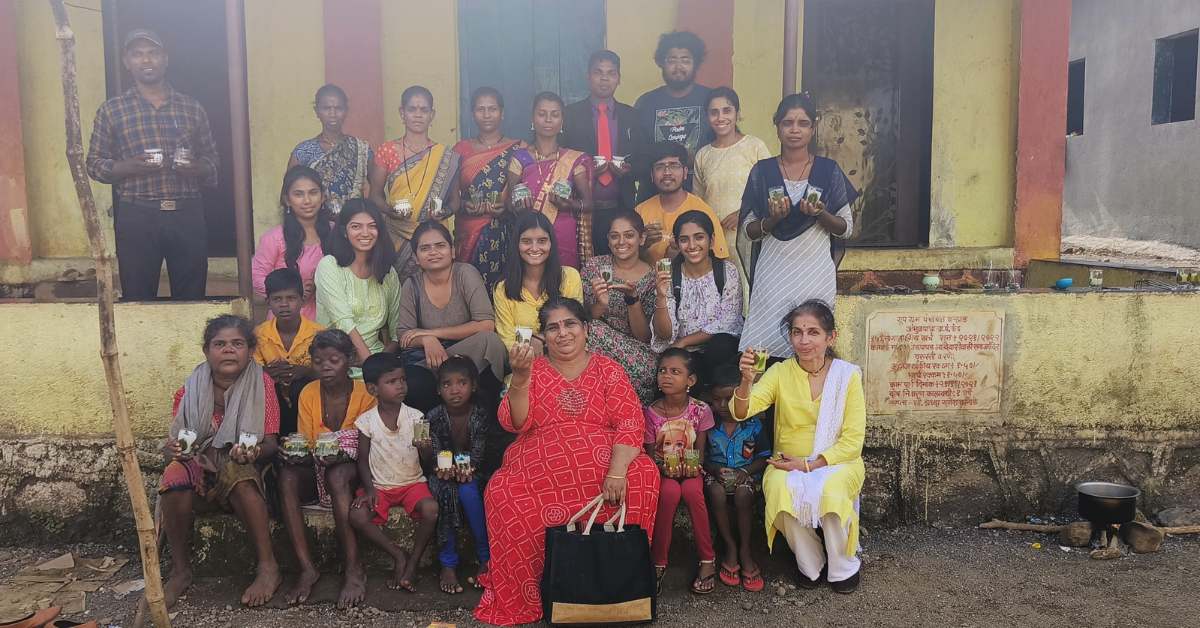 Sushmita has helped artisans across India gain a stable income through her platform
Sushmita has helped artisans across India gain a stable income through her platform
“With steady income from selling candles, I can stop relying on unpredictable labour work. Even earning Rs 3,000 to Rs 4,000 a month would bring much-needed stability. Most importantly, I want my children to see their mother creating her identity, so they can dream bigger and believe in their potential,” she adds.
Crafting for the future, rooted in the past
A key challenge Sushmita faced was overcoming the generational divide in the artisan community. Many artisans, like the Nirmal artisan she met, were reluctant to pass down their craft to the younger generation, fearing that it would not provide financial stability. However, with time and success, things began to change.
“I remember one workshop where an artisan who initially did not want his children to pursue the craft brought his son to learn along with others. I felt accomplished in what I was doing, and this motivated me to carry on,” says the entrepreneur.
This growing sense of empowerment is not only limited to the artisans but extends to the customers as well. By making these traditional arts accessible and functional, the organisation is ensuring that they stay relevant and are passed down to future generations.
The platform’s commitment to sustainability goes beyond the crafts themselves. The team follows eco-friendly packaging, using materials like husks instead of bubble wrap to protect fragile products. Additionally, the company is planning to incorporate blockchain technology to authenticate handicrafts, guaranteeing that customers are receiving genuine products.
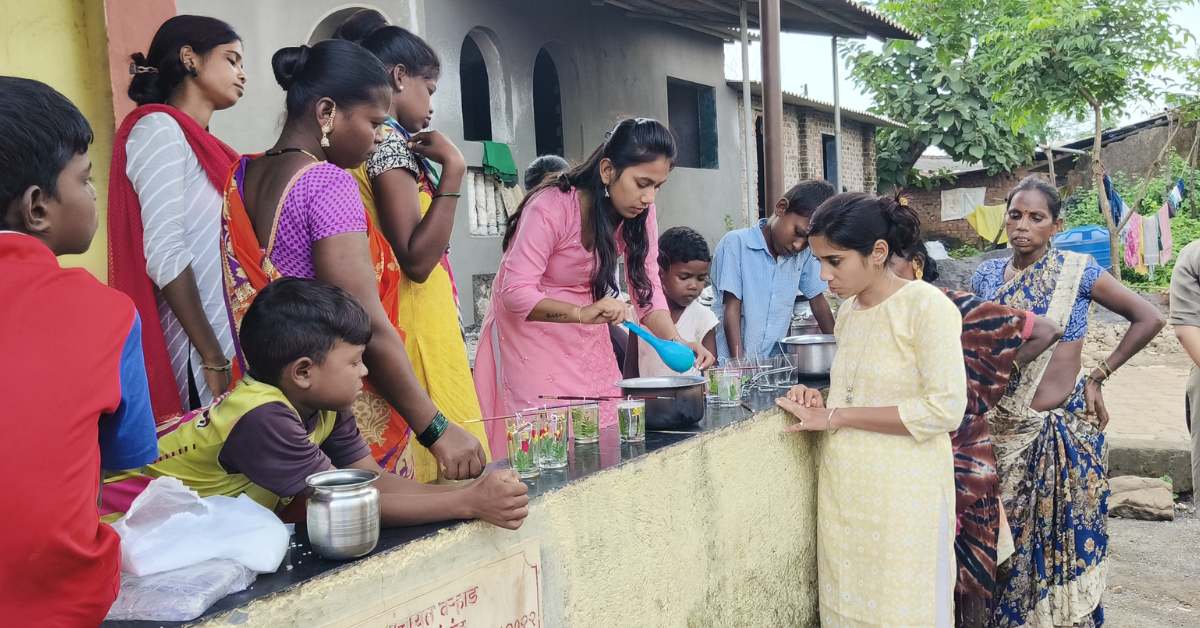 The social entrepreneur conducts skill training workshops for new artisans so they can build a sustainable livelihood
The social entrepreneur conducts skill training workshops for new artisans so they can build a sustainable livelihood
The founder’s vision for the future of Gullakaari is ambitious but grounded in her desire to make a real impact. “We are focused on creating sustainable livelihoods for artisans, preserving endangered crafts, and connecting with the global audience. We want to ensure these art forms remain a part of India’s cultural fabric,” she says.
The platform is currently working to preserve 13 endangered crafts, each with its own rich history and cultural significance. These include Warli painting from Maharashtra, Patachitra from Bengal and Orissa, Gond painting from Madhya Pradesh, Chittara art from Karnataka, Naikpod masks from Telangana, and Tholu Bommalata from Andhra Pradesh.
Additionally, they focus on Nirmal and Cheriyal paintings from Telangana, Kalamkari from Telangana and Andhra Pradesh, hand sculpting from Bengal, Miniature painting from Rajasthan, Kavad storytelling boxes from Rajasthan, and Madurkathi from Bengal.
She chose purpose over paychecks
For Sushmita, the journey of entrepreneurship has not been easy, as her parents initially wanted her to take up the stable job offer. She says, “I always wanted to use my education in technology for creating social impact. Today, my parents support my vision, and I am proud of what we have built.”
Her father, Rajendra Kaneri (61), says, “At first, we were sceptical when Sushmita decided to venture into entrepreneurship. It was unfamiliar territory for us, as our family had always followed stable careers. We worried about her financial security and the risks involved. But over time, seeing her determination and the positive change she was creating, we realised this was more than just a business, and she was working hard to build her platform.”
“Watching artisans who once struggled now earn with dignity, and witnessing the revival of crafts we had nearly forgotten, filled us with pride. As a father, seeing her passion and the community she has built has been a source of immense joy. I am proud of the meaningful impact she is making,” he adds.
 Sushmita’s parents always supported her through this journey of becoming a social entrepreneur
Sushmita’s parents always supported her through this journey of becoming a social entrepreneur
When we asked about the sales and overall profits, the social entrepreneur shares, “At present, our primary buyers are corporates, and we are focusing on bulk gifting for corporates and personal events. Our product range includes tableware, stationery, pen stands, organisers, lampshades, coasters, hand-painted diaries, tote bags, and more, all carefully crafted, functional, and perfect for everyday use. Prices range from Rs 25 to Rs 2,000, with curated hampers priced at Rs 2,500.”
In 2024 alone, the platform sold over 4,000 handcrafted pieces, and in just two years, its artisanal revenue has cumulatively reached Rs 50 lakh.
“We have partnered with 15 corporates, offering not only products but also workshops where artisans share their craft, earning a training fee for their expertise,” says the entrepreneur.
The products are marketed through the online platform and social media, where the team educates their customers, offering insights into the stories behind each piece. “Each handcrafted piece embodies the skill, tradition, and passion of the artisans behind it. We take immense pride in sharing their stories and craftsmanship with our customers,” concludes Sushmita.
Edited by Vidya Gowri; All pictures courtesy Sushmita Kaneri
News